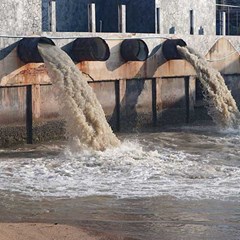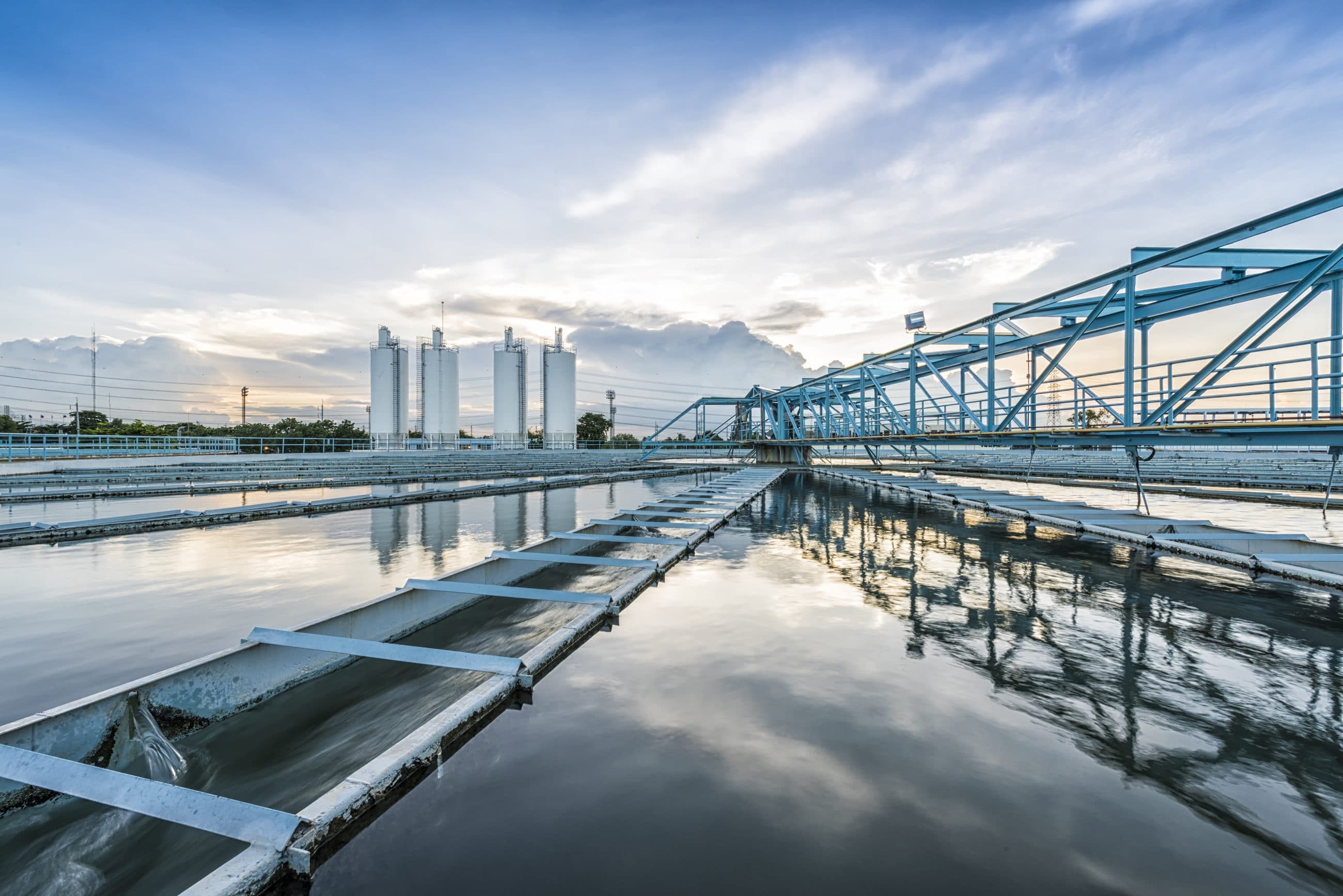Industrial Waste Water Treatment-- Advanced Solutions for Cleanser Effluents
Industrial Waste Water Treatment-- Advanced Solutions for Cleanser Effluents
Blog Article
Secret Methods in Hazardous Waste Water Therapy Processes
The therapy of industrial wastewater is an important aspect of ecological administration, involving a variety of methods designed to alleviate the effect of pollutants. From the fundamental physical approaches that separate solids to the innovative chemical and organic processes that target details toxins, each method plays a crucial role in attaining water quality criteria. Developments in innovations such as membrane layer filtration and advanced oxidation procedures use innovative solutions for improving therapy effectiveness. Understanding exactly how these techniques adjoin and their effects for sustainability raises essential inquiries concerning the future of wastewater management in market.
Physical Therapy Techniques
Exactly how efficiently can physical treatment techniques deal with the intricacies of commercial wastewater? Physical therapy techniques play a critical function in the initial stages of wastewater administration, focusing primarily on the removal of solids and huge particulates. Strategies such as sedimentation, flotation protection, and purification are essential for minimizing the concentration of put on hold solids, consequently improving the effectiveness of succeeding therapy procedures.
Sedimentation involves the gravitational settling of solids, enabling for the splitting up of heavier products from the wastewater. This approach is particularly efficient in making clear water prior to chemical or biological therapies.
In addition, flotation methods, which use air bubbles to raise suspended solids to the surface area for elimination, work in treating wastewater with high concentrations of fats, oils, and greases. Generally, physical therapy methods serve as a crucial first step in the comprehensive monitoring of commercial wastewater, making certain that the tons on subsequent therapy stages is minimized and improving overall treatment effectiveness.
Chemical Treatment Techniques
While physical treatment methods lay the foundation for efficient wastewater management, chemical therapy techniques are important for resolving the more complicated contaminants usually found in industrial effluents. These methods make use of different chemical agents to precipitate, reduce the effects of, or oxidize hazardous materials, ensuring a much more comprehensive removal of pollutants.
One typical strategy is coagulation and flocculation, where chemical coagulants such as aluminum sulfate or ferric chloride are included in advertise the gathering of put on hold bits. This process enhances solid-liquid separation, lowering turbidity and enhancing water quality. In addition, neutralization procedures are utilized to adjust the pH of wastewater, utilizing acids or bases to reduce the effects of acidic or alkaline streams, respectively.
Oxidation-reduction reactions play a crucial function in degrading natural pollutants and microorganisms. Chemical oxidants like hydrogen, chlorine, or ozone peroxide are utilized to damage down complex organic compounds, making them less damaging or a lot more naturally degradable. Progressed oxidation procedures (AOPs) incorporate numerous oxidation methods to improve toxin removal performance.
Biological Treatment Processes
The efficiency of wastewater treatment is considerably enhanced by biological treatment procedures, which harness the all-natural metabolic activities of microorganisms to decompose natural issue and eliminate contaminants. Industrial Waste Water Treatment. These procedures primarily entail aerobic and anaerobic digestion, each customized for specific sorts of wastewater
Cardio therapy procedures use oxygen to sustain microbial development, advertising the break down of organic toxins into co2 and water. Typical approaches include turned on sludge systems, where aeration containers facilitate the mixing of wastewater with microbes, and flowing filters, which encourage biofilm growth on media surface areas.
Alternatively, anaerobic therapy processes occur in the absence of oxygen, utilizing anaerobic germs to decompose raw material, leading to biogas production, a renewable resource resource. Anaerobic digesters are usually utilized in industrial setups for this objective, properly decreasing the quantity of sludge while producing important biogas.
The selection of a biological treatment approach depends upon wastewater qualities, therapy goals, and governing requirements. The integration of organic processes in wastewater treatment not just enhances toxin removal performance yet likewise promotes sustainability by lessening chemical usage and sustaining resource recuperation.
Advanced Oxidation Processes

Common AOP methods consist of Fenton's ozonation, reagent, and photocatalysis. visit here Fenton's reagent, a combination of hydrogen peroxide and ferrous iron, catalyzes the formation of hydroxyl radicals, making it reliable for dealing with wastewater containing phenolic substances and other recalcitrant compounds. Ozonation utilizes ozone as an effective oxidant, with the ability of deteriorating a wide range of natural pollutants while all at once decontaminating the effluent. Photocatalysis uses light-activated stimulants, such imp source as titanium dioxide, to boost oxidation reactions and remove contaminants.
AOPs offer several advantages, consisting of minimized sludge production and the capacity to treat wastewater with high concentrations of organic contaminants. The application of AOPs needs mindful factor to consider of functional parameters and cost-effectiveness, making sure that these innovative techniques are appropriately incorporated into existing wastewater treatment systems.
Membrane Layer Purification Technologies

Microfiltration works for eliminating put on hold solids and microorganisms, while ultrafiltration targets smaller sized natural particles and infections. Nanofiltration bridges the gap between ultrafiltration and reverse osmosis, effectively removing natural compounds and divalent ions. Reverse osmosis offers the highest degree of filtration, used largely for desalination and removing mono-valent ions.
Membrane innovations supply numerous benefits, including low power consumption compared to traditional therapy techniques, modular style for scalability, and the possibility for water recovery and reuse. Difficulties such as membrane fouling and the requirement for routine maintenance must be resolved to guarantee system efficiency. On the whole, membrane filtering technologies represent a vital component of modern industrial wastewater therapy strategies, advertising sustainability and resource conservation in water administration.
Conclusion
In verdict, commercial wastewater therapy uses a diverse selection of methods, consisting of physical, chemical, organic, and progressed methods. Proceeded improvements in these methods will additionally enhance the efficiency and effectiveness of wastewater therapy procedures in industrial setups.
The treatment of commercial wastewater is a vital aspect of environmental administration, entailing a range of strategies designed to reduce the influence of impurities.How efficiently can physical therapy approaches address the complexities of industrial wastewater?Advanced oxidation processes (AOPs) represent an innovative strategy in industrial wastewater treatment, designed to efficiently break down natural contaminants that are frequently resistant to traditional therapy approaches (Industrial Waste Water Treatment).In verdict, commercial wastewater therapy uses a varied selection of strategies, consisting of physical, chemical, organic, and progressed approaches. Proceeded innovations in these techniques will certainly better boost the performance and performance of wastewater therapy processes in industrial settings
Report this page